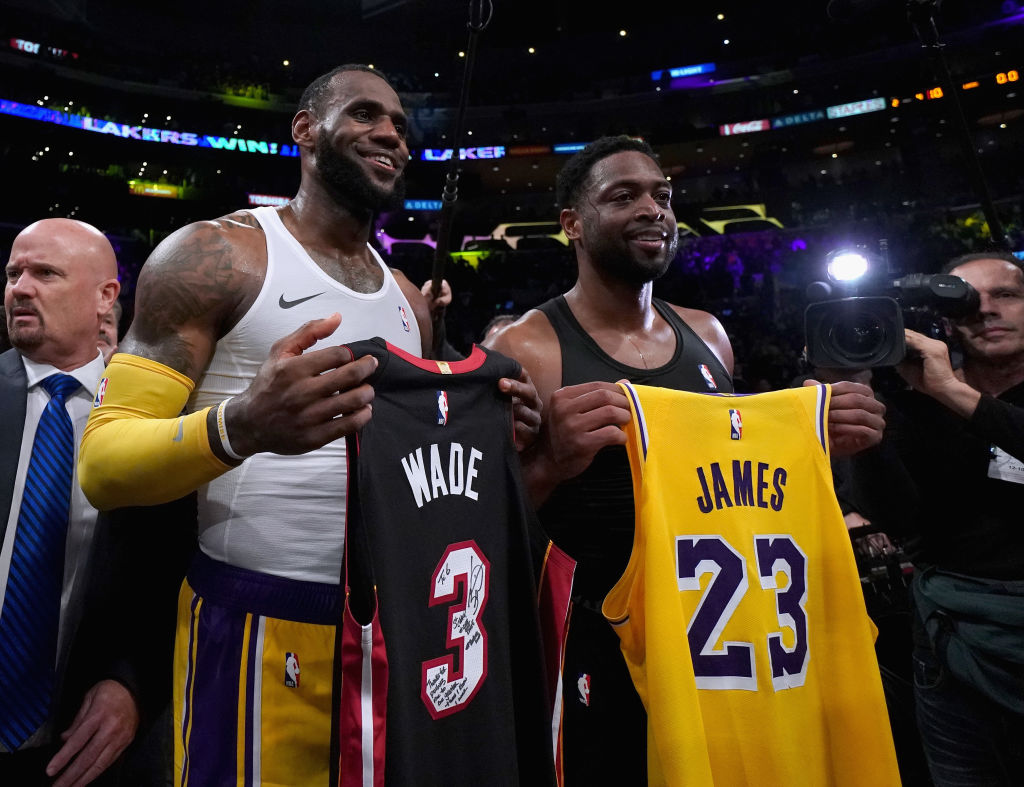NBA
Why NBA Players Exchange Jerseys and Where It Started

Turn on the TV to watch any NBA contest these days and immediately following the game, especially if there’s a marquee player like LeBron James involved, you’ll see players exchanging their game jerseys. Why do they do this now and when and where did this trend start?
Exchanging jerseys started in soccer
The tradition of exchanging jerseys following a game started in soccer almost 100 years ago. The earliest record of it happening occurred following a 1931 match when France beat England for the first time. So excited to have defeated the English, the French players asked the English players if they could have their jerseys as mementos of the occasion. The English accommodated the requests. Talk about good sportsmanship.
Since that first match, swapping jerseys in soccer has become common practice. The first documented swap in World Cup action happened in 1954 and on the European club scene it first occurred in 1962.
While Major League Soccer is relatively new compared to other international leagues, many of the players in MLS have adopted the traditions of their European counterparts, including this particular post-game ritual.
Exchanging jerseys in the NBA
The tradition of swapping jerseys in the NBA is still a relatively new concept and former Miami Heat star Dwyane Wade is one of the earliest players credited with participating in the post-game exchange.
Wade’s jersey, like other big-name players, was often a challenge to get because the jersey was in high demand by players from the opposing teams. What most fans don’t realize is while it may appear to be a simple exchange of jerseys happening at the game’s end, oftentimes there’s advanced preparation for the post-game moment.
Players sometimes make requests days in advance by calling or texting the player. It’s also quite common for players to inquire during pregame warm ups. Some players have admitted they even asked during the game.
Before Wade retired, he was known for having the entire exchange planned in advance. Instead of giving the opposing player a sweaty jersey, most of the time he would give them a dry jersey with an autograph and special note he had written on it.
What happens to the exchanged jerseys?
In most cases, the players obtain the jerseys for personal collections. Some may hang in a personal office or a man cave. While not often the case, some players admit to putting the jerseys in a box or a drawer and never displaying them.
Although you would assume most players have good intentions when they make the exchange, some times the lure of profit is too much and the jerseys end up being sold for top dollar. One of the best examples occurred in 2002 when a Brazil jersey worn by international legend Pelé in the 1970 World Cup sold for $310,000. The sellers were the family of the Italian player who traded with Pelé during the match.
According to one sports memorabilia dealer, a game-worn jersey from a player like Lionel Messi or Cristiano Ronaldo can easily fetch well into five figures. When you hear these type of stories, it all makes sense that Wade would exchange pre-signed jerseys not only in an attempt to offer a personal touch, but to reduce the chance the jersey ends up for sale.
Next time you see players swap jerseys after the game, you’ll know it’s not some haphazard last-minute thing. And if it’s a big-name star, you can’t help but wonder whether or not you’ll see it for sale online in the future.











